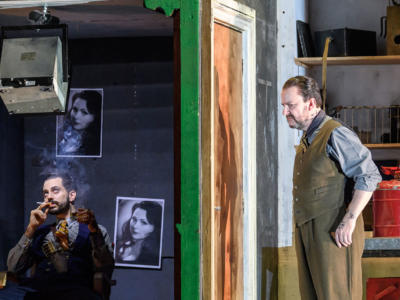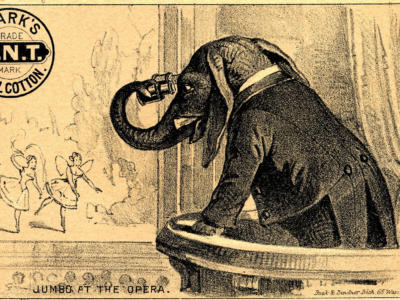Offenbach's Can-can music in film and TV
It’s one of the most famous pieces of music in the world, but you might not recognise the ‘Galop infernal’ by name.
Featuring in the final Act of Offenbach’s Orpheus in the Underworld, the ‘Galop infernal’ is the most famous example of Can-can music.
The fast paced, high-energy music has been used regularly in TV and film throughout the years. Look at some examples here!
The Little Mermaid
Video
Chef Louis and Sebastian’s frantic chase around the kitchen works perfectly with this version of Offenbach’s score.
It is no coincidence that one of the most famous French songs is paired with this stereotypically French character.
The Little Mermaid, released in 1989, was Disney’s 28th animated feature film. The plot is loosely based on Hans Christian Andersen’s fairy tale by the same name.
Moulin Rouge
Video
It’s not surprising that the can-can features in Baz Luhrman’s Moulin Rouge! (2001).
In the film, a version of Offenbach’s score is heard as the bohemians propose their new show, Spectacular Spectacular. The Can-can dance features later in the film, to different music.
The real Moulin Rouge, Paris’s famous cabaret club, is known widely as the birthplace of the dance itself. The risqué high kicks have brought in crowds since its opening in 1885.
Looney Tunes
Video
Offenbach’s score can be heard as the Looney Tunes characters jump into a painting of a Can-can dancer by the French artist Henri de Toulouse-Lautrec.
When the Moulin Rouge opened, Toulouse-Lautrec was commissioned to create a series of posters, immortalising the dance for which the cabaret club was most famous.
The scene is filled with classical music, from opening with Johann Strauss the Younger’s The Blue Danube, to Vivaldi’s Mandolin Concerto.
Take a look at some more examples of classical music in cartoons.
Pinky and The Brain
Video
Just like in the clip from the Moulin Rouge, Offenbach’s score has been used as the tune to this song, although this time it is about The Brain’s dictatorship.
The Brain, sings about world domination, satirising some of history’s best-known dictators. Use of the ‘Galop infernal’ in this scene is apt due to its origins in an opera that mocks Napoleon III’s Second Empire.


![By MGM (source) [Public domain], via Wikimedia Commons](https://ekat8wd2es5.exactdn.com/wp-content/uploads/2017/12/A_Night_at_the_Opera_film_poster-400x300.jpg?strip=all&lossy=1&quality=90&webp=90&ssl=1)
